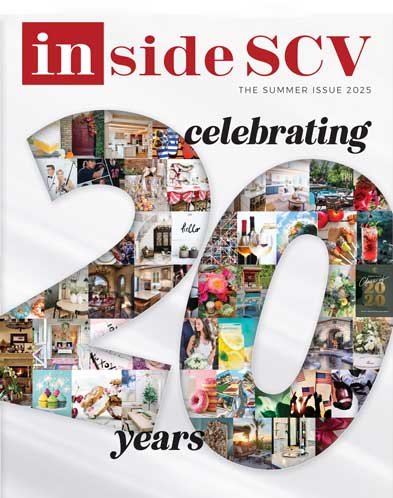HEALTH - HEALTHY & HAPPY
Healthy & Happy
July, 2021 - Issue #201
 courtesy of Shutterstock |
Issues with your Hearing? Know your Letters
Are you noticing that hearing conversation with noise in the background is difficult? Are your family and friends telling you to turn down the television? Are you having a hard time hearing people on the telephone? Do you know people are talking, but are not sure what they are saying? Do you feel like if people would just talk slower and stop mumbling, all the above issues would be solved?
If you answered "yes" to any of the above, then it is time to have your hearing tested. So where do you go? Who do you see? What now?
You have choices. There are several different places to go when you are ready to have a hearing test. And those providers all have letters after their name. What do they mean?
AuD = Doctor of Audiology
This is the highest level of education in the field of clinical audiology. This provider has been trained in not only diagnosing hearing loss, but also has knowledge of the hearing mechanism. Could your hearing loss be a sign of something medical in nature that needs medical treatment? Medication? Surgery? A hearing doctor is the one who can determine that.
MA or MS = Masters of Arts/Science
Prior to 1994, this was the highest level of education in the field of audiology. This provider has also been trained in diagnosing hearing loss and has knowledge of the entire hearing mechanism. When the doctoral degree became available in 1994, all providers with a master's degree had the opportunity to go back to school and obtain a higher level of education. Some took advantage of the education and some did not.
HIS = Hearing Instrument Specialist
This provider has been trained to test hearing solely for the purpose of fitting a hearing aid. Their purpose is to sell you a hearing aid.
Your physician may refer you to an office that has one or more providers with varying levels of education and different degrees. Know what those letters mean behind the name of your provider. The choice is always yours.
Santa Clarita Hearing Center 388-4135
How the Digital World is Keeping Seniors at Home
Digital health is becoming essential, especially for the elderly. As early Baby Boomers enter their 70s, the challenges and costs of providing health care to this large segment of the population are leading medical facilities, insurance providers and home care companies like Home Instead to look into technology solutions.
The best digital solution right now is GrandCare, a large touchscreen that is placed into a loved one's residence. It is a source of information and communication with family pictures, videos, games, trivia, weather/news, simple video chatting and health care reminders.
Caregivers can simply log in or check the GrandCare app to add communications or check on activity, medications or health readings. They can also get alerts if something seems amiss - like if your loved one didn't take medications, their blood pressure is too high, they didn't get out of bed, or they're not moving around normally. Better yet, GrandCare requires zero computer knowledge on the senior's part for it to become an important addition to your loved one's daily care and life.
GrandCare goes hand-in-hand with quality, pro-active home care. As health care companies come under increased financial pressure to reduce hospital readmissions, GrandCare provides the remote monitoring technology at home that's part of this mega-trend of healthcare moving into the home. In addition, GrandCare helps relieve loneliness, especially when family or friends are distant or are busy with work and kids. Loved ones can communicate more frequently and stay updated on special events and family news. GrandCare is the future of staying connected, staying well and staying home!
Home Instead Senior Care for Santa Clarita and Antelope Valleys 254-8701
 courtesy of Shutterstock |
Control Hypertension with the DASH Diet
If your blood pressure has crept into a dangerous range, you're going to need to make some changes to bring it under control. Specifically, your doctor may recommend that you try a special eating plan known as DASH, or Dietary Approaches to Stop Hypertension. In several studies, DASH has shown to be helpful in reducing blood pressure, especially when it's combined with other lifestyle changes, such as cutting back on salt.
Following the DASH diet means cutting back on saturated fat, trans fat and cholesterol and choosing more fruits, vegetables and low-fat dairy foods.
The amount of food you eat in the DASH diet will depend on how many calories you need. A person who is less active needs fewer calories than a person whose work or personal activities are more vigorous.
For a 2,000-calorie-a-day diet, DASH calls for:
Six to eight servings of grains and grain products a day.
Four to five servings of vegetables a day.
Four to five servings of fruits a day.
Two to three servings of low-fat or fat-free dairy foods a day.
Six or fewer 1-ounce servings of cooked lean meats, skinless poultry or fish a day.
Four to five small servings per week of nuts, seeds, dry beans or peas.
Only 27 percent of calories should come from fat, including fat in or added to foods, such as margarine, vegetable oil or mayonnaise.
Sweets - no more than five servings per week - should also be low in fat.
Though DASH can help lower your blood pressure, it becomes even more effective if you also cut back on sodium.
Henry Mayo Newhall Hospital's Community Education Department offers a number of classes and workshops on healthy eating.
henrymayo.com/classes
Cold Laser, Hot Results
New Treatment for Fungal Nails is Changing Lives
Laser therapy is gaining in popularity because mainstay onychomycosis - fungal infection of the nails or toenails - therapies have continuously provided inconsistent outcomes. Worse, they often come with potentially-significant adverse events. In contrast, low-level laser therapy provides a safe and subtle - yet effective! - approach to the treatment of onychomycosis.
Whether it is the clinical validation, the effectiveness or the safety, the Lunula Cold Laser is providing patients with a non-invasive and painless treatment solution for their fungal toenails. This therapy has emerged as the alternative treatment of choice.
In a preliminary study involving over 100 patients, there was an average clearance of 73.89 percent in as little as 3.5 months - following only two treatments! In this study, neither concurrent systemic nor topical therapy was utilized. In another ongoing study, it appears that an increased number of treatments - four treatments as opposed to two treatments - will result in a significantly-increased success rate of 89 percent, utilizing a topical in conjuction.
Valencia Foot & Ankle Center 288-2321
Varicose Veins & Pregnancy
There are many risk factors for varicose veins - and one of them is pregnancy. Women undergo significant physiological changes with pregnancy. Increased blood volume and hormonal changes cause the veins to dilate. In addition, a gravid uterus exerts downward pressure on the leg veins. Many women can develop bulging varicose veins during their pregnancy. Fortunately, these may regress once the baby is delivered. However, in some women, they may remain and unfortunately, may worsen with subsequent pregnancies. This can cause leg pain, aching, cramping, fatigue and restless legs. Fortunately, the treatment for varicose veins is very effective and minimally invasive.
Harvard- and Stanford-trained double-board-certified vascular surgeon Dr. Larisse Lee focuses on the most up-to-date techniques to get the results you want. The LA Vein Center is a state-of-the-art facility in Sherman Oaks that offers minimally-invasive procedures with exceptional results.
laveincenter.com
|
||||||||||||||||||||||||||||




